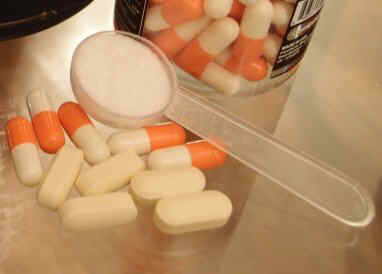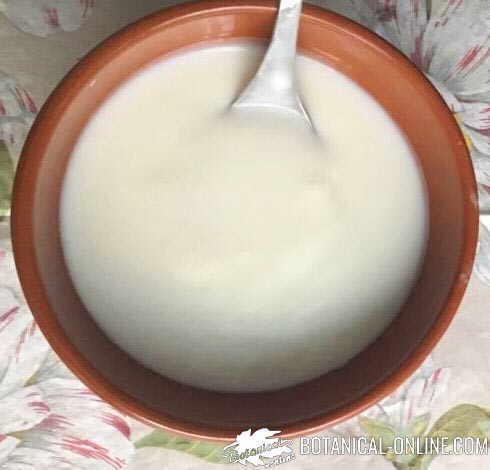Contents
- 1 Benefits and problems of chlorination and fluoridation of water
- 1.1 Fluoride in the water to prevent cavities
- 1.2 Where does fluoride in the water come from?
- 1.3 Is fluoridated water dangerous?
- 1.4 Is it necessary to add chlorine to drinking water? Can the chlorination of tap water be dangerous?
- 1.5 Toxicity of chlorine
- 1.6 Is it convenient to chlorinate the water?
- 1.7 How to eliminate chlorine from water? How to remove the taste of chlorine?
Benefits and problems of chlorination and fluoridation of water
Fluoride in the water to prevent cavities

Fluoride is added to drinking water to protect teeth against cavities
Drinking water from many places has been treated with fluoride as a way to fight tooth decay. The fluorine values added to the water are between 0.5-1.0 mg / liter.
It has been shown that this mineral protects tooth enamel against the action of bacteria when administered in moderate amounts (0.5 mg / liter).
Where does fluoride in the water come from?
- Many waters contain high amounts of fluorine from minerals that dissolve in the interior of the earth.
- In addition, many fluorinated compounds are involved in industrial production, such as aluminum, fiberglass or steel.
- Much of this fluoride is poured into rivers. Other times, air emissions of these components occur as a result of the manufacturing process of the fertilizer and ceramic industry.
- These products are deposited with rain on the ground and, through filtration, become part of the groundwater.
- Fluorine residues have also been found in the analyzes carried out on food by absorption of these compounds. Among the foods that have found the greatest proportion are fish, tea or cabbage.
Is fluoridated water dangerous?
In studies carried out with mice, it has been proven that the ingestion of fluoride for a few weeks in high doses produced disorders in the skeleton. Among the most characteristic symptoms that occurred were the problems of calcification in bone fractures and decreased bone volume.
Many specialists warn about indiscriminate fluoridation since, in their opinion, this is sometimes responsible for the appearance in children of fluorosis, consisting of the development of white spots on the teeth as a result of an excess of fluoride
It has been found, according to the World Health Organization, that this anomaly occurs when the water contains amounts between 0.9 and 1.2 mg / liter, coinciding with high temperatures. At lower temperatures, doses greater than 2 mg / l would be necessary to produce these effects. When there are other forms of fluoride, in addition to water, doses lower than 1.5 mg / l could produce the same results.
Similarly, there are many detractors who accuse fluoride of being responsible for the increasing occurrence of hip fractures in older people. In his opinion, fluoride decreases the flexibility of the bones and makes them weaker and more prone to breakage.
Is it necessary to add chlorine to drinking water? Can the chlorination of tap water be dangerous?

Chlorine is added to the water to disinfect it
In the chlorination of water, chlorine is used as an industrial disinfectant, for its ability to eliminate bacteria and odors; for bleaching paper, in the manufacture of bromine, in the production of bleach and in the chlorination of drinking or bathing water.
Most communities use chlorine to remove microorganisms from tap water and make it suitable for human consumption. The chlorine is added to the water in a proportion of 0.2 to 1 mg / l.
Toxicity of chlorine
Ingestion of products with high doses of chlorine, such as bleach, is responsible for large irritations in the esophagus, throat or mouth. These ingestions are accidentally performed in young children who tend to rapidly expel the fluid.
There are suspicions that chlorine in water may be responsible for:
- The appearance of asthma or dermatitis.
- In the same way it has been seen that cholesterol levels were higher in places where water with high levels of calcium was added chlorine.
- There are even studies tending to demonstrate the relationship between chlorinated water and bladder cancer.
Is it convenient to chlorinate the water?

According to the World Health Organization, there are no conclusive studies that demonstrate the negative effects of chlorine in drinking water, while the benefits of adding this chemical element are incalculable in preventing the emergence of numerous contagious diseases.
How to eliminate chlorine from water? How to remove the taste of chlorine?
Chlorine, however, provides an unpleasant smell and taste to water. To eliminate chlorine can be used different procedures ranging from some home resources, such as leaving the tap water in an open bottle to evaporate or boil the water, to more sophisticated such as activated carbon filters or water treatment systems, such as inverted osmosis.
However we have to take into account that this water to which we have removed the chlorine is unprotected against the development of bacteria so it should be drunk as quickly as possible or leave it in the fridge. In any case, it must be consumed before 24 hours after treatment and should not be left exposed to room temperature.
![]() More information on chlorine and fluoride
More information on chlorine and fluoride
MINERAL LIST
| MINERALS | MACROELEMENTS | MICROELEMENTS |
| Calcium, chlorine, phosphorus, magnesium, sodium, potassium | Copper, chromium, fluorine, iron, manganese, molybdenum, selenium, iodine, zinc. |








